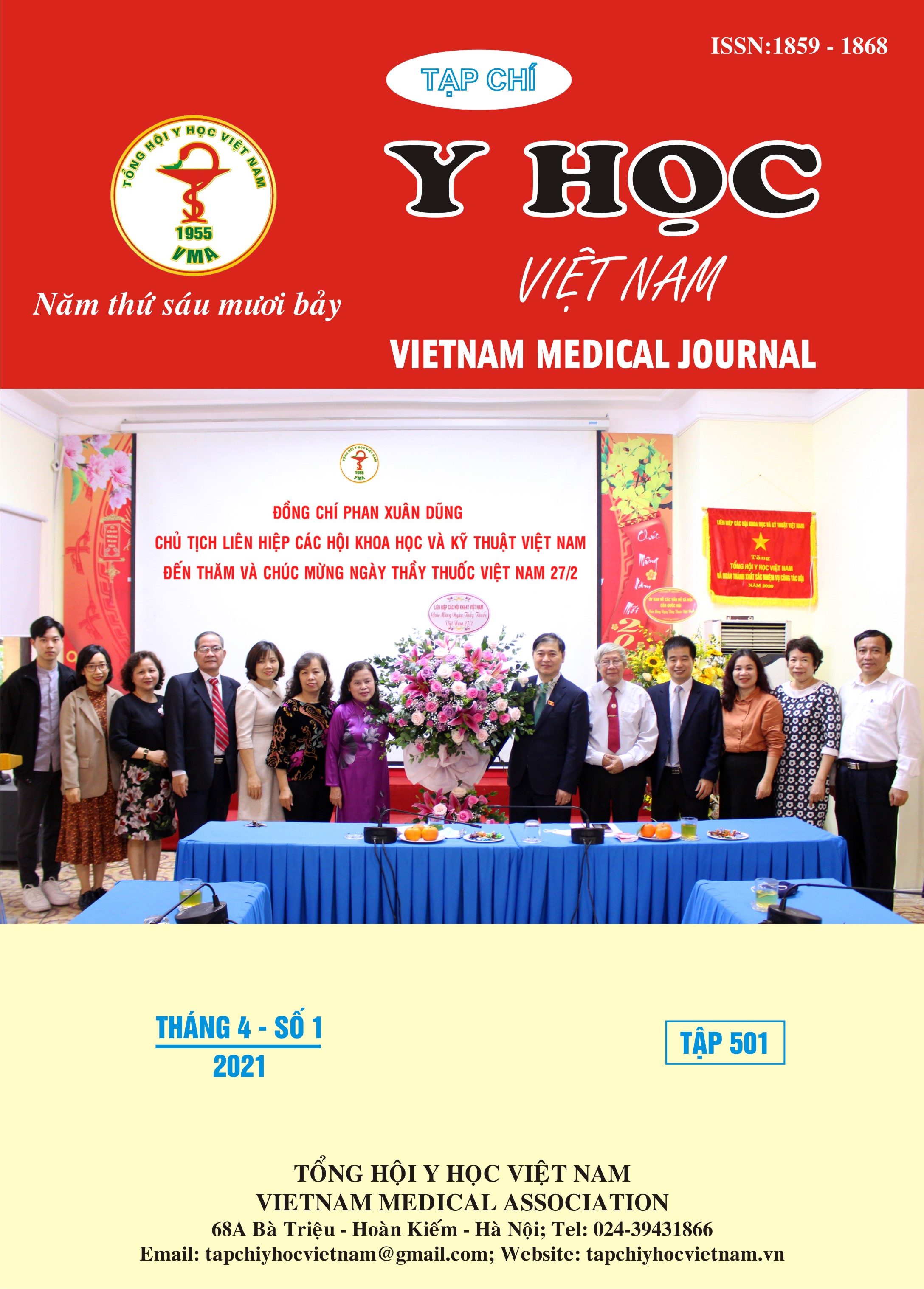INVESTIGATION ON THE ANTIMICROBIAL THERAPY FOR TREATMENT OF INFECTIONS DUE TO MULTIDRUG-RESISTANT GRAM-NEGATIVE BACTERIA AT DONG NAI GENERAL HOSPITAL
Main Article Content
Abstract
Objectives: The aims of this study were to analyze the antibiotic resistance and the antibiotic used in treatment of multidrug-resistant gram-negative bacteria, to evaluate the appropriateness of antimicrobial therapy according to guidelines; and to identify risk factors contributing to treatment failures. Methods: We conducted a cross-sectional descriptive and retrospectively study. Results of susceptibility testing and medical records of patients with Acinetobacter baumannii or Klebsiella pneumonia or Pseudomonas aeruginosa infections at ICU and respiratory department of Dong Nai hospital from 1st January, 2018 to 31th December, 2018 were collected. Results: There were 301 patients’ medical records included. 32 drugs in 14 antibiotic groups were selected to treat infection: penicillin 96.6%, carbapenem 58.5% and quinolon 30.9%. Combination of 2 antibiotic was preferred (50.2% and 49.1% before and after antibiogram), in which the combination of quinolone and betalactam 33.2%. The rate of antibiotic which suitable to antibiogram before and after the microbiologic results were 35.8% and 54.3%. The majority of antibiotics used compliance to current guidelines (61.6%). Factors contributing to treatment failures were using ventilator/ being admitted to ICU. Using ventilation (OR = 5.2; 95% CI: 2.07 ÷ 13.07; P <0.001), being admitted to ICU (OR = 12.8; 95% CI: 4.61 ÷ 35.54; P <0.001). Using sensitive antibiotics for more than 7 days reduces the risk of treatment failure (OR 0.41; 95% CI: 0.19 ÷ 0.89; P = 0.024). Conclusions: The use of antibiotics in treatment of multi-drug resistant gram-negative bacteria infections was highly adhered to microbiologic result or current guidelines. Using ventilator or being admitted to ICU were the factors associated with patients’ outcomes.
Article Details
Keywords
MDR-NGB, acinetobacter, pseudomonas, klebsiella, antibiotic, antimicrobial
References
2. Bergmans DC, Bonten MJ et al (1997). Indications for antibiotic use in ICU patients: a one-year prospective surveillance. J Antimicrob Chemother, 39(4):527-35.
3. Đoàn Mai Phương, (2017), Báo cáo tại hội nghị khoa học toàn quốc về hồi sức cấp cứu và chống độc 2017, truy cập ngày 31/10/2018, .
4. Ezebuenyi MC, Brakta F et al (2018). Evaluation of Physician Prescribing Patterns For Antibiotics in the Treatment of Nonnecrotizing Skin and Soft Tissue Infections, P & T : a peer-reviewed journal for formulary management 43(5):287-292.
5. Gattarello S, Ramírez S et al (2015). Investigadores del CRIPS. Causes of non-adherence to therapeutic guidelines in severe community-acquired pneumonia. Revista Brasileira de terapia intensiva, 27(1):44-50.
6. Nguyễn Bửu Huy, Phan Thị Phụng, Nguyễn Mai Hoa, Vũ Đình Hòa và Nguyễn Hoàng Anh (2018 ). Phân tích tình hình sử dụng kháng sinh trên bệnh nhân viêm phổi bệnh viện/viêm phổi thở máy điều trị tại Khoa Hồi sức tích cực, Bệnh viện Đa khoa Thành phố Cần Thơ, Dược Học, số 507, tr.8-13.
7. WHO (2016). The second National Antibiotics Awareness Week in Viet Nam highlights the continued high level commitment of the government against antimicrobial resistance (AMR), Ha Noi
8. Sbrana F, Malacarne P et al (2013). Carbapenem-sparing antibiotic regimens for infections caused by Klebsiella pneumoniae carbapenemase-producing K. pneumoniae in intensive care unit. Clin Infect Dis, 56(5):697-700.


